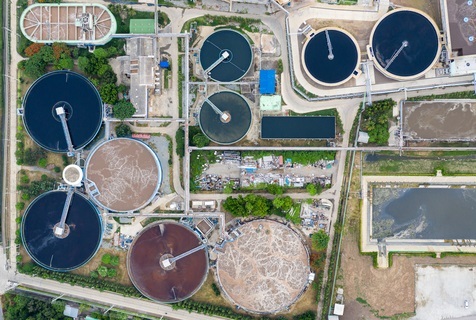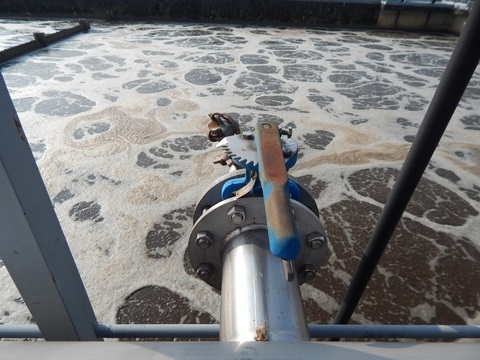
 Data Structure
Data Structure Networking
Networking RDBMS
RDBMS Operating System
Operating System Java
Java MS Excel
MS Excel iOS
iOS HTML
HTML CSS
CSS Android
Android Python
Python C Programming
C Programming C++
C++ C#
C# MongoDB
MongoDB MySQL
MySQL Javascript
Javascript PHP
PHP
- Selected Reading
- UPSC IAS Exams Notes
- Developer's Best Practices
- Questions and Answers
- Effective Resume Writing
- HR Interview Questions
- Computer Glossary
- Who is Who
Wastewater Treatment: Purpose, Design, And Types
Introduction
Wastewater treatment is the process of removing contaminants from water that has been used for industrial, commercial, and residential purposes. The purpose of wastewater treatment is to protect human health, the environment, and water resources by ensuring that treated wastewater meets certain quality standards before being discharged into the environment.
Wastewater treatment involves physical, chemical, and biological processes that can vary depending on the type of wastewater being treated and the desired level of treatment.
The article below discusses the purpose of wastewater treatment, the design of wastewater treatment plants, and the different types of wastewater treatment processes.
Purpose of Wastewater Treatment
The purpose of wastewater treatment is to remove contaminants from wastewater to protect human health, the environment, and water resources. Wastewater can contain a variety of contaminants, including organic and inorganic pollutants, pathogens, nutrients, and metals.
These contaminants can cause a range of health and environmental problems if not properly treated and disposed of.
The primary objectives of wastewater treatment are ?
Protecting public health by removing harmful contaminants from wastewater before it is discharged into the environment.
Protecting the environment by preventing the release of harmful pollutants that can harm aquatic ecosystems and wildlife.
Protecting water resources by ensuring that treated wastewater meets certain quality standards before being discharged into water bodies.
Conserving water resources by recycling and reusing treated wastewater for non-potable purposes.
Design of Wastewater Treatment Plants
Wastewater treatment plants are designed to remove contaminants from wastewater using physical, chemical, and biological processes.
The design of a wastewater treatment plant can vary depending on the type of wastewater being treated and the desired level of treatment.

The basic components of a wastewater treatment plant include ?
Inlet
The inlet is where the wastewater enters the treatment plant. Wastewater is usually transported to the inlet by gravity or a pump system.
Preliminary Treatment
The preliminary treatment process involves removing large objects and debris, such as rocks, sticks, and trash, from the wastewater. This is typically accomplished using screens, grit chambers, and sedimentation tanks.
Primary Treatment
The primary treatment process involves removing suspended solids and organic matter from the wastewater. This is typically accomplished using settling tanks, where gravity causes the solids to settle to the bottom of the tank.
Secondary Treatment
The secondary treatment process involves removing dissolved and suspended organic matter from the wastewater. This is typically accomplished using biological processes, such as activated sludge, trickling filters, or rotating biological contactors.
Tertiary Treatment
The tertiary treatment process involves removing any remaining contaminants from the wastewater. This is typically accomplished using advanced treatment processes, such as membrane filtration, ultraviolet disinfection, or chemical precipitation.
Disinfection
The disinfection process involves killing any remaining pathogens in the wastewater. This is typically accomplished using chlorine or ultraviolet disinfection.
Effluent Discharge
The final step in the wastewater treatment process is discharging the treated wastewater into the environment. The quality of the effluent is regulated by federal and state standards to protect public health and the environment.
Types of Wastewater Treatment Processes
There are several different types of wastewater treatment processes that can be used to remove contaminants from wastewater. The type of process used depends on the type of wastewater being treated and the desired level of treatment.
Activated Sludge Process
The activated sludge process is a biological treatment process that involves aerating wastewater and adding microorganisms to break down organic matter. The microorganisms consume the organic matter and convert it into carbon dioxide, water, and biomass. The biomass is then separated from the treated wastewater using settling tanks.

Trickling Filters
Trickling filters are another type of biological treatment process that involves passing wastewater through a bed of porous media, such as rocks or plastic, where microorganisms grow and consume organic matter. The treated wastewater is then separated from the biomass using settling tanks.

Rotating Biological Contactors
Rotating biological contactors are similar to trickling filters, but instead of a stationary bed of media, the media rotates through the wastewater. This process provides a larger surface area for microorganisms to grow and consume organic matter.
Membrane Filtration
Membrane filtration is an advanced treatment process that uses semi-permeable membranes to remove contaminants from wastewater. The membranes can be either microfiltration, ultrafiltration, nanofiltration, or reverse osmosis, depending on the level of treatment needed.
Chemical Precipitation
Chemical precipitation is a process that involves adding chemicals, such as lime or ferric chloride, to wastewater to precipitate out contaminants. The precipitated contaminants are then separated from the treated wastewater using settling tanks.
Electrocoagulation
Electrocoagulation is a process that uses an electrical current to remove contaminants from wastewater. The process involves adding electrodes to the wastewater and applying an electrical current, which causes the contaminants to coagulate and settle out of the water.
UV Disinfection
UV disinfection is a process that uses ultraviolet light to kill pathogens in wastewater. The wastewater is exposed to UV light, which damages the DNA of pathogens, rendering them unable to reproduce.
Chlorine Disinfection
Chlorine disinfection is a process that uses chlorine gas or liquid to kill pathogens in wastewater. The chlorine is added to the wastewater, where it reacts with pathogens and breaks down into harmless by-products.
Conclusion
Wastewater treatment is an essential process that protects human health, the environment, and water resources by removing contaminants from wastewater. The purpose of wastewater treatment is to ensure that treated wastewater meets certain quality standards before being discharged into the environment.
Wastewater treatment plants are designed to remove contaminants from wastewater using physical, chemical, and biological processes.
The type of process used depends on the type of wastewater being treated and the desired level of treatment. By understanding the purpose, design, and types of wastewater treatment, we can work together to ensure that our water resources are protected for generations to come.

